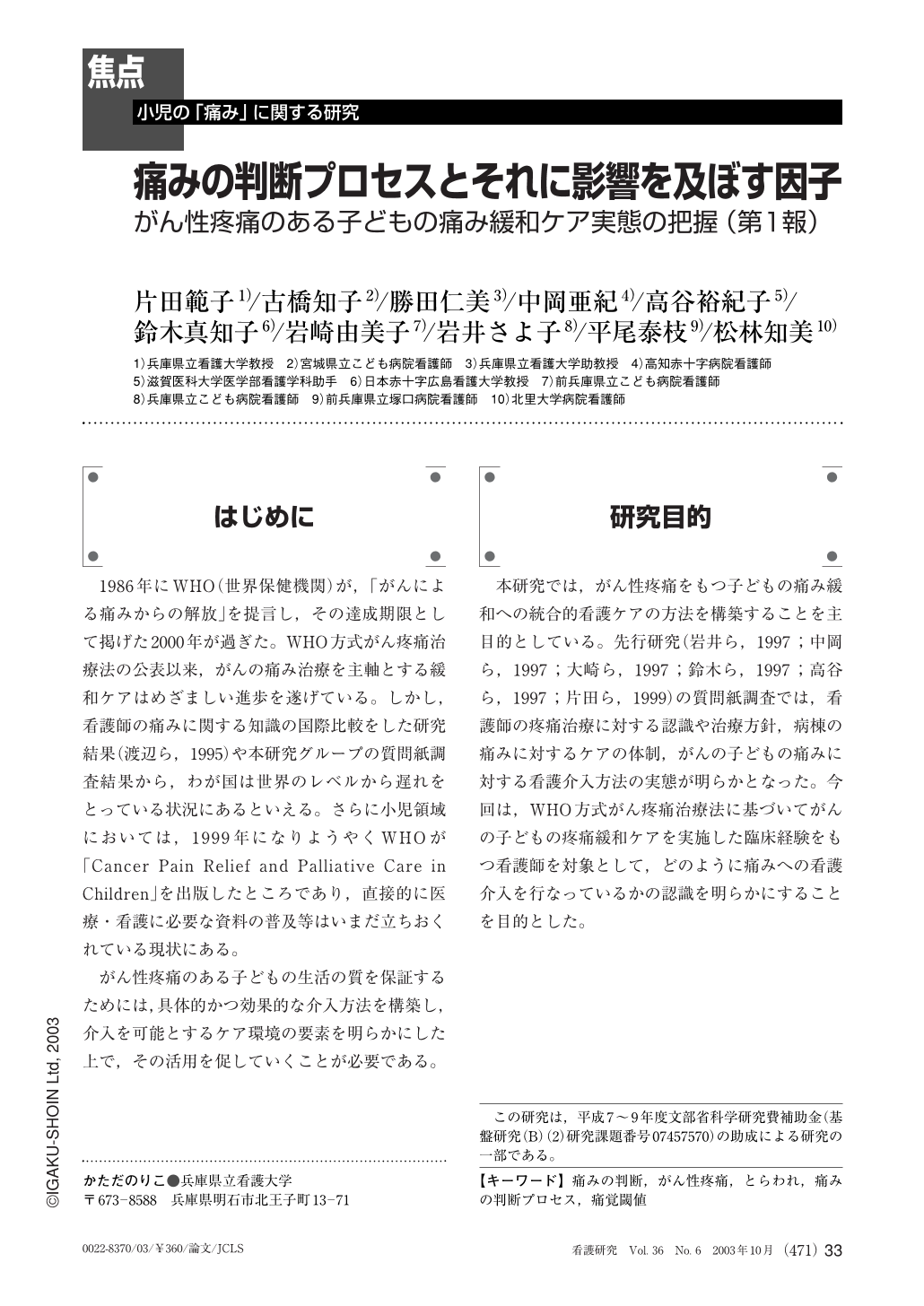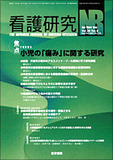Japanese
English
- 有料閲覧
- Abstract 文献概要
- 1ページ目 Look Inside
- サイト内被引用 Cited by
はじめに
1986年にWHO(世界保健機関)が,「がんによる痛みからの解放」を提言し,その達成期限として掲げた2000年が過ぎた。WHO方式がん疼痛治療法の公表以来,がんの痛み治療を主軸とする緩和ケアはめざましい進歩を遂げている。しかし,看護師の痛みに関する知識の国際比較をした研究結果(渡辺ら,1995)や本研究グループの質問紙調査結果から,わが国は世界のレベルから遅れをとっている状況にあるといえる。さらに小児領域においては,1999年になりようやくWHOが「Cancer Pain Relief and Palliative Care in Children」を出版したところであり,直接的に医療・看護に必要な資料の普及等はいまだ立ちおくれている現状にある。
がん性疼痛のある子どもの生活の質を保証するためには,具体的かつ効果的な介入方法を構築し,介入を可能とするケア環境の要素を明らかにした上で,その活用を促していくことが必要である。
The main purpose of this study was to build the integrated nursing care method to relieve the child from cancer pain. This paper covers a part of the larger study and describe the nursing care situation for the child with cancer pain which focused on the process of pain assessment carried out by nurses and factors influence its process. The subjects of this study (N=17) were nurses who worked at the hospital reported to utilizing WHO method of pain treatment. Interviews were conducted after obtaining the informed consent from the subject and ethical consideration for privacy and free participation had been taken through the study. The data were analyzed by the group of research members. The process of the nurses' assessment when they face with the children in pain was abstracted from the data. There are three stages until the nurses come to grasp of the situation and tried to intervene the child with pain. Even though the nurses perceived the child having the pain, the nurses were not necessary to initiate the intervention. It was observed that the nurses were trying to differentiate the true pain from false pain. The process was complicated by children's developmental level of verbal ability. In order for the nurses to determine the nature of child's pain and to intervene, the presence of concrete evidence seems to be necessary.

Copyright © 2003, Igaku-Shoin Ltd. All rights reserved.


